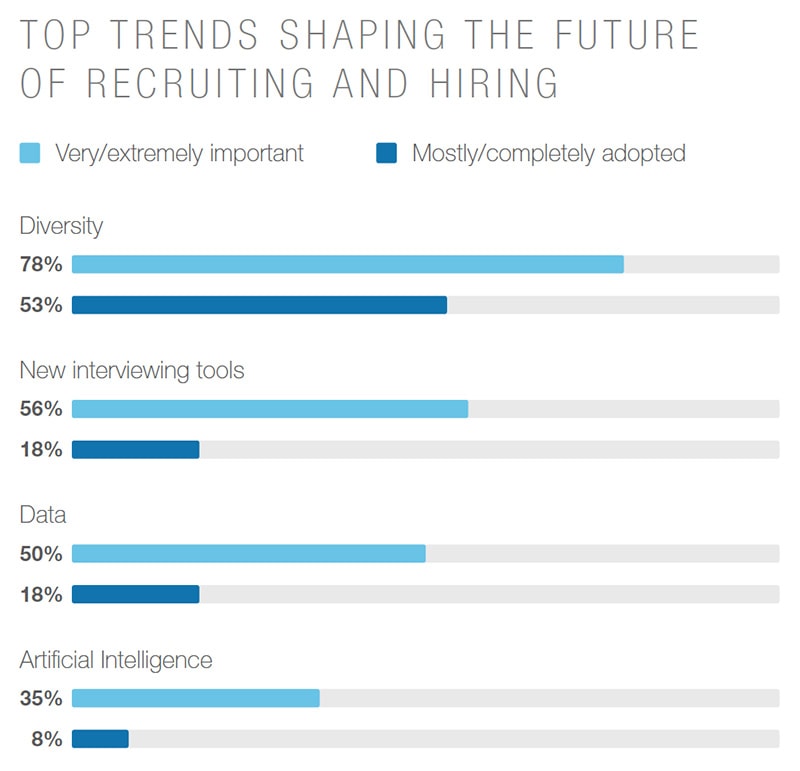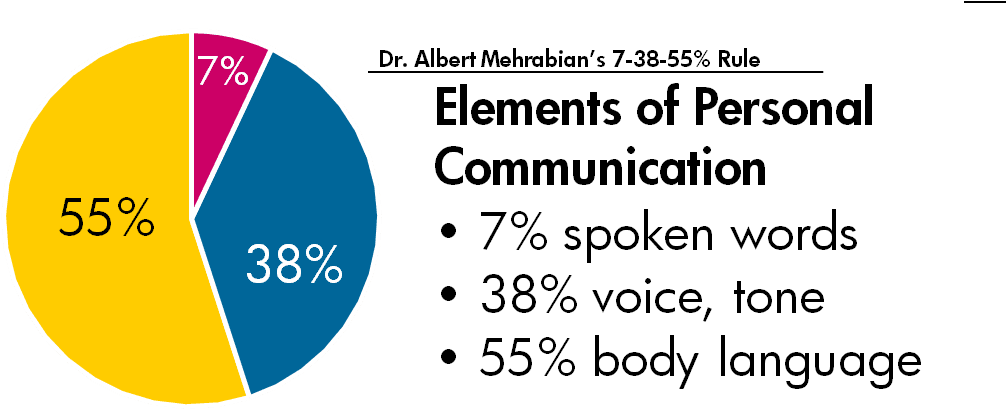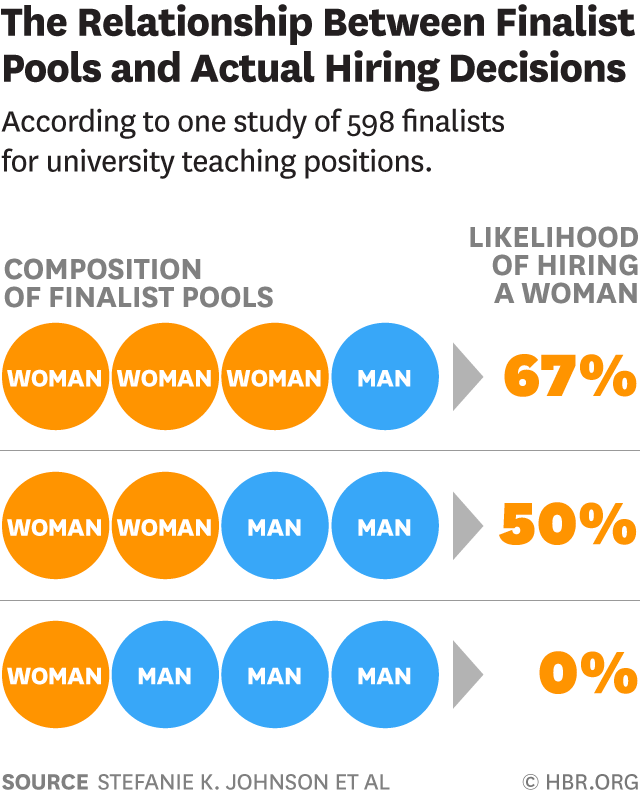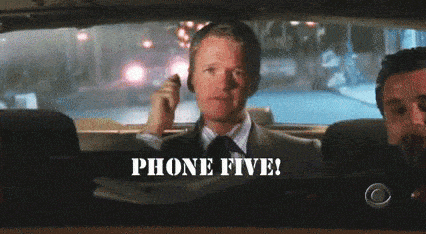The complete guide to interviewer bias – what is it and how to eliminate it

A bad hire in tech can cost as much as $485,371.38. This is a cost few companies can afford. In many cases, bad hires can are the result of interviewer bias, inefficient screening methods, or a combination of these.
Are recruiters even aware of the phenomenon? As it turns out, they are. Based on LinkedIn data, 42%of recruiters believe interview bias is a problem of traditional interviews.
 Source: LinkedIn
Source: LinkedIn
Hiring in IT is risky and time-consuming. Offers are only made after reviewing applications, technical screening, performing background and reference checks, phone screening, and a final interview. So here comes the surprise: according to a study by Schmidt and Hunter, the interview can predict only about 14% of the variability in employee performance. It seems that recruiters rely heavily on a process that is far from being perfect and one of the most significant factors that affect it is an interviewer bias.
Interviewer bias definition
In short, interviewer bias is a situation where the recruiter makes a judgment about candidates based not on their skills and abilities, but on irrelevant personal impressions that cloud the recruiter’s judgment. All people use unknowingly use mental shortcuts, that’s why interview bias is in most cases unintentional and unconscious. There are also different types of bias and it’s crucial to know them in order to learn how to avoid them.
Interviews are an inevitable part of professional life, but they’re also social exchanges between people, commonly in the form of a casual conversation. It means there is a huge room for social factors, that can, unfortunately, negatively influence the final decision whether to hire someone or not. Humans regularly rely on mental shortcuts that help us make decisions fast, without too much effort, and to help us concentrate on the most critical factors while ignoring others. Unfortunately, it often results in interview bias, which can influence the outcome of a candidate’s evaluation. This influence is usually negative, but can also be positive. Both cases are harmful to the organization.
Types of interview bias
1. Nonverbal bias
Nonverbal bias is widespread and takes place when the recruiter evaluates a candidate based on his or her body language: a smile, handshake, general posture, etc. It’s wrong not only because candidates are not judged based on their skills or experience, but also because an interview is always a stressful situation and their body language is not the same as on a daily basis.
Example of nonverbal bias
The recruiter has a negative impression of the candidate based on a handshake. They think that a strong handshake is a sign of self-confidence, which is a valuable trait in the position they recruit for. When a candidate welcomes the recruiter with a gentle handshake, they see it as a lack of self-confidence and is biased before the interview even starts. According to Albert Mehrabian’s 7-38-55 Rule of Personal Communication, appearance and body language have a 55% share in forming the first impression.
 2. First impression bias
2. First impression bias
First impression bias is often connected to nonverbal bias. It occurs when candidates are evaluated based on how they behave during the first minutes of the interview, which involves both verbal and nonverbal communication.
Example of first impression bias
An example of first impression bias: A candidate is visibly stressed, he stutters, and his hands are shaking. Even if such behavior stops completely during the interview, recruiter thinks this is not the right candidate, despite the common knowledge that an interview is always a stressful situation. The first impression can also be positive. In such a case, a candidate who is not the best in answering interview questions can be assessed as more competent and easier to work with than another interviewee whose first impression was neutral. Unfortunately, this interviewer bias example is very common.
Interestingly, research shows that it takes on average seven seconds to make an impression of someone. Studies also show that first impressions are notoriously persistent and they’re difficult to be changed. “According to Bertram Gawronski, our brain stores expectancy-violating experiences as exceptions-to-the-rule, such that the rule is treated as valid except for the specific context in which it has been violated.”.
3. Contrast bias
Contrast bias is quite common and happens when there are multiple interviews in a row, and recruiters compare the candidates based on inappropriate assumptions. Having the right skill set and being a good cultural fit becomes less important than how candidates compare to each other.
Interestingly, this holds true in the cases where there’s only one woman in the pool of finalists for a position. Even factors such as the women to men ratio of the finalist pool have an impact on the decision. The Harvard Business Review study shows that “when there is only one woman, she does not stand a chance of being hired, but that changes dramatically when there is more than one.”
Example of contrast bias
An example of a contrast bias: a candidate who is interviewed after someone who’s not a good fit for many reasons may seem to be more competent just in contrast to the previous one. On the other hand, a strong candidate may look weaker if interviewed after someone extraordinary. A contrast effect has been observed a long time ago, by the seventeenth-century philosopher John Locke, although not in the context of a job interview, but a physical observation. He realized that the way we feel the temperature is affected by the fact if we touched something cold or hot right before.
4. Negative emphasis bias
Negative emphasis bias occurs when an interviewer judges a candidate based on personal, irrelevant preferences, such as hight size, tone of voice, or hairstyle. In fact, according to the research conducted at the University of Florida, taller men earn more. Specifically, an extra $789 per year with every inch of height. It’s a highly unprofessional behavior which is relatively easy to eliminate.
Example of negative emphasis bias
Example of negative emphasis bias: a candidate meets all the needs regarding skills and professional experience, but comes to the interview underdressed or overdressed. This causes the interviewer to emphasize these factors more than those that matter.
5. Stereotyping bias
Stereotyping bias happens when a recruiter judges a candidate based not on their individual traits and skills but on a stereotypical opinion about the entire group he or she belongs to. It is not only illegal, at least in most countries, but also costly. A recent study by the Boston Consulting Group (BCG) has found that companies with diverse management have 19% higher revenue thanks to innovation. This cannot be ignored, especially by tech companies, startups, and companies under the digital transformation where innovation is crucial.
Example of stereotyping bias
An example of stereotyping bias: a hiring manager may prefer hiring a man to a male-dominated team of engineers despite meeting a female candidate that is equally or even more highly skilled. It also occurs when recruiters favor people with specific skin colors or from specific ethnicity groups. Despite being illegal in most countries, stereotyping interviewer bias is still present in many companies around the world.
6. ‘Similar to me’ bias
‘Similar to me’ bias occurs when both the candidate and the recruiter have things in common which positively affects a candidate’s evaluation. This highly unprofessional behavior is often unconscious, as everyone tends to have more affection towards a person who is similar or seems to be similar.
 Example of ‘similar to me’ bias
Example of ‘similar to me’ bias
An example of the ‘similar to me’ bias: The interviewer sees in the candidate’s CV that they share a hobby or they used to go to the same high school. It immediately creates an atmosphere of familiarity and affects the interviewer’s judgment. As a result, this candidate may be assessed as a stronger cultural fit to the organization even when it’s irrelevant or simply untrue.
7. Halo effect bias
Halo effect bias is another type of interviewer bias when a single characteristic or behavior colors a general impression overshadowing skills and abilities. It has been very well-defined by Daniel Kahneman, a famous economist, and psychologist, awarded by the Nobel Memorial Prize in Economic Sciences.
“If people are failing, they look inept. If people are succeeding, they look strong and good and competent. That’s the ‘halo effect.’ Your first impression of a thing sets up your subsequent beliefs. If the company looks inept to you, you may assume everything else they do is inept.”
Example of halo effect bias
An example of the halo effect bias: a candidate for a web development position is self-confident, smiles, seems to be relaxed. The candidate makes an excellent first impression, but it’s not what this job is about: it requires strong technical skills and lots of independence. Even if it’s quite obvious that these skills cannot be assessed based on the first impression, it can still cloud the judgment. Another halo effect example is when a candidate’s previously outstanding work creates a halo effect, even if it’s not connected to the new job because it required a different technology stack.
8. Horn effect bias
Horn effect bias is the opposite of halo effect bias. It occurs when a single characteristic creates an artificially negative impression in an interviewer. This doesn’t only affect the interview itself but the entire recruitment process, all the way to making the final decisions.
Example of horn effect bias
An example of horn effect bias: the candidate makes a spelling mistake on the application form. An interviewer who is particularly attentive to detail gets a bad impression of the candidate, even if the position doesn’t require perfect spelling. Both halo and horn effects are known for almost 100 years. In 1290, a psychologist Edward L. Thorndike discovered that officers judged soldiers based on single irrelevant traits, both in a positive (halo) and negative (horn) way. Halo and horn effects are a very common cause of the interviewer bias.
9. Anchoring bias
Anchoring bias occurs when a recruiter relies so heavily on previous experience that they can’t see other opportunities. He or she can have an idea of a perfect candidate as a person, without considering whether they have the right skill set and experience the team is looking for. Anchoring also commonly takes place during salary negotiation. Whoever is proposing it first makes an anchor and the 2nd person is the one who confronts it. As a result of anchoring, high salary requests often result in a high salary in the end.
Example of anchoring bias
An example of anchoring bias: a company is looking for a new project manager after the previous one has left. He was such a great employee that the hiring manager tries to find someone whose personality reminds them of the person who is leaving. Big mistake, skills, and abilities matter. A new employee can be a completely different person and still thrive in this job. As a result of this kind of interviewer bias, a company can miss a perfect candidate.
10. Gut feeling bias
Gut feeling bias happens when the final decision about hiring a candidate depends on recruiter’s intuition rather than a set of reasonable and measurable arguments for hiring this person. Two researchers at the Swiss Bank Credit Suisse, Michael J. Mauboussin, and Dan Callahan, have found 4 reasons why the gut feeling is usually wrong: we’re too influenced by other people, our brains seek patterns even in random events, we prefer to choose a small gain now over a larger gain later, and mourn losses twice as hard as you celebrate gains and therefore were less likely to take a risk.
Example of gut feeling bias
Example of gut feeling bias: a candidate seems to be a perfect fit and meets all the criteria is rejected based on a recruiter’s feeling that ‘something is wrong’. It’s hard to explain even to the team members, not to mention giving the feedback to the candidate. It should be stressed that making a decision based on a gut feeling is nothing else than interviewer bias.
How to eliminate the interviewer bias: 10 tips and techniques
Interviewer bias is in most cases unintentional and unconscious, which makes it very hard to eliminate. Moreover, some types of interviewer bias are harder to avoid than others. Luckily, there are numerous ways to minimize interviewer bias and implementing them consciously is a must for every organization. Not only to be fair towards the candidates but also to meet the business goals. As we’ve already stated, hiring is crucial but also risky, and an unsuccessful hire can seriously damage teamwork, reputation, and profits. It’s true in every organization, but the risk is the biggest in startups and in management positions. That’s why it’s so important that the recruitment process is based on professional, measurable and clear metrics, and not clouded by any type of interviewer bias.
RECOMMENDED READING: Avoid unconscious bias in your tech recruitment process
To eliminate interviewer bias, you need to first realize that it exists and needs to be avoided. Here are some tips to eliminate its impact:
1. Ask every interviewee exactly the same set of questions
Many interviews have a form of a more or less casual conversation, which makes it difficult to compare the candidates afterward. An unstructured interview is likely to be clouded by different kinds of bias, particularly by halo/horn effect, similar to me bias, and first impression bias. When there is a clear structure, and every interview is comparable, then it’s much more likely that bias is avoided.
2. Don’t be the only interviewer, create a panel interview instead
Two (or more) heads are better than one and less affected by bias, which is always subjective. When a panel of interviewers is diverse in terms of background, gender, age, and other factors, it’s much less likely to be affected by bias than a single person or a team of similar people. The final decision whether to sign a contract or not shouldn’t be made by one person.
3. Start with a phone screening
 On the phone, interviewers are less affected by non-verbal bias, halo/horn effect or first impression biases. Physical features remain unnoticed, but there still may be factors that can cause bias, like a foreign accent or stuttering as a result of dealing with a stressful situation on the phone. That’s why phone screening is useful, but it shouldn’t be the only technique.
On the phone, interviewers are less affected by non-verbal bias, halo/horn effect or first impression biases. Physical features remain unnoticed, but there still may be factors that can cause bias, like a foreign accent or stuttering as a result of dealing with a stressful situation on the phone. That’s why phone screening is useful, but it shouldn’t be the only technique.
Recommended reading: Phone interview questions, Second Interview questions
4. Use a scientific employee assessment process, identical for every candidate for this position
It will eliminate most of the biases, especially gut feeling bias. Work sample based technical screening has high predictive validities. All candidates for a given position should solve the same test so their results are truly comparable.
5. Design an efficient, automated process of screening technical skills
Screening technical skills before any face-to-face interaction helps you filter out all non-viable candidates before the first interview. In the optimal setup, candidates are assessed solely on their ability to solve the tasks they were presented with for recruitment purposes.
6. Anonymize candidate results
Anonymized candidate reports allow you to focus solely on the skills and not other factors unrelated to performance. Here’s what an anonymized report looks like in DevSkiller:
7. Establish a clear definition of the job, don’t have a person in mind
A well-formulated job description helps to avoid anchoring bias. When you are clear about what you want from the start, you can make sure your candidates meet the needs required by the position itself and not the interviewer’s bias.
8. Don’t rely on memory
Always take notes and record an interview if allowed. Memories are interpretations of what happened in the past, influenced by expectations and profoundly affected by emotions and bias.
You can also record technical screening test sessions and look back at them for even more insights.
9. Ask open-ended questions
Open-ended questions are more difficult to be interpreted and therefore affected by bias because it’s harder to impose subjective measurements on the answers to them. What is more, open-ended questions make it easier to get evidence of competency and measure their motivation to do the work. Example? 45 behavioral questions for a non-technical interview with a developer or 60 web development software specialist interview question
10. Be constantly self-aware of the bias that can cloud the judgment of the candidates and their skills.

Source: Pinterest
It’s not an easy task. Overall, recruiters are human beings, vulnerable to bias, stereotypes and mental shortcuts. However, a professional should be aware of that and do everything necessary to minimize the effects.
Interviewer bias: conclusion
The interview remains an essential part of the recruitment process in different types of organizations around the world. It is also is the gateway to an organization. At the same time, it is an insufficient predictor of a future employee’s performance. Human factors, such as unintentional bias that leads to judging the candidates based on metrics that not at all related to their ability to do the job, remain the main reason behind it. What is worse, AI-powered algorithms won’t eliminate the negative human factor because they learn on databases provided by people that are already affected by bias. The good news is that recruiters can still minimize its effects – by consciously acknowledging that bias exists and doing whatever possible to avoid it.
Share post